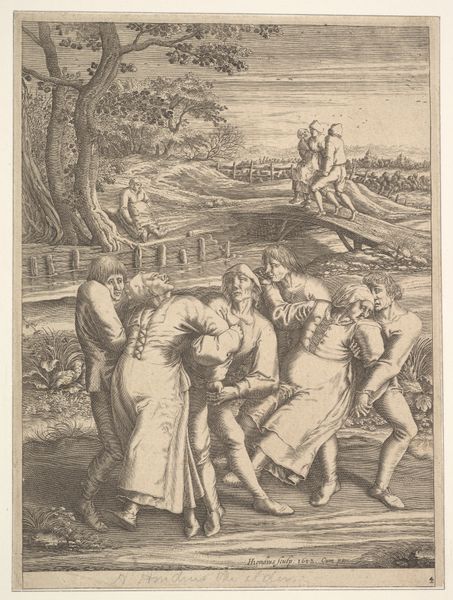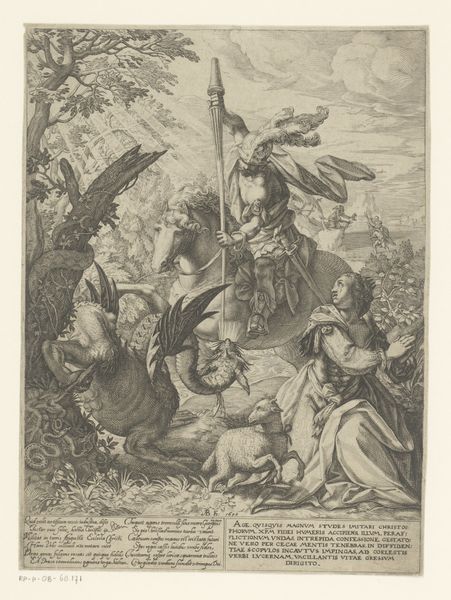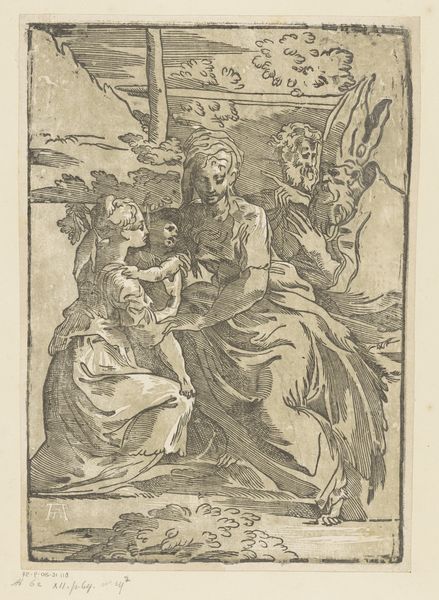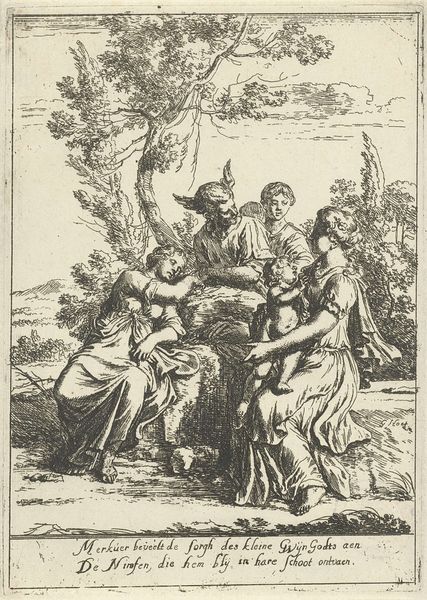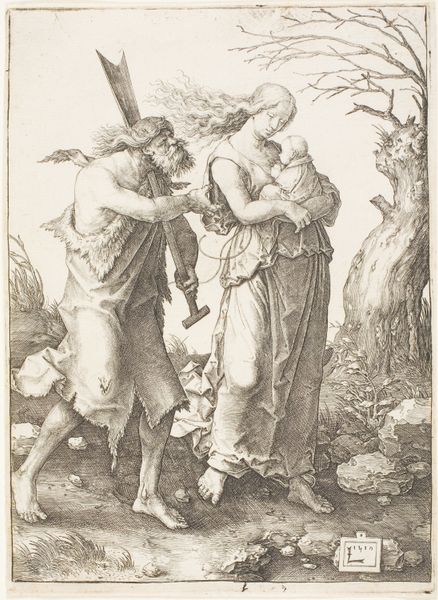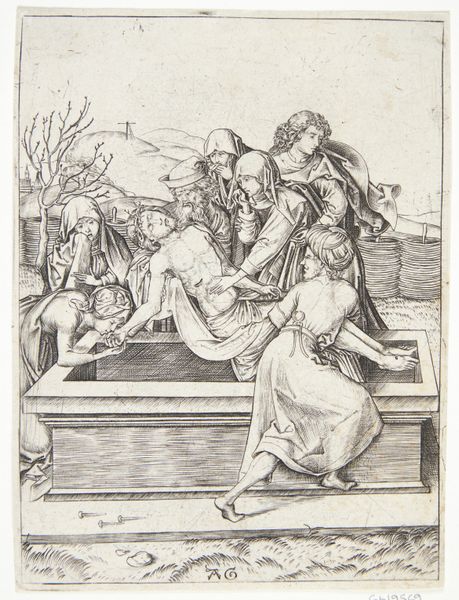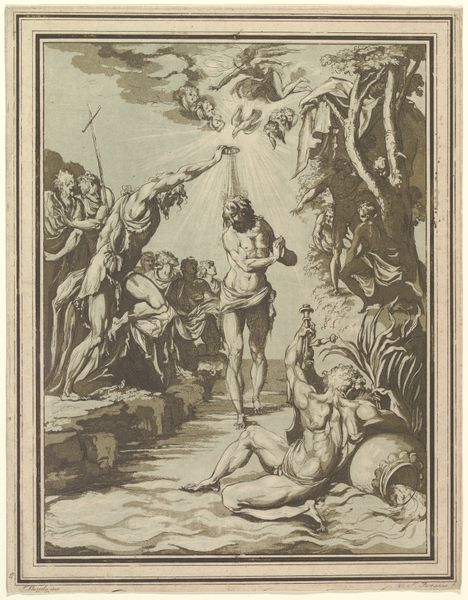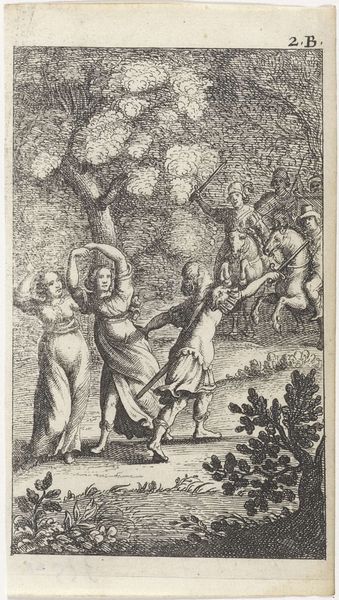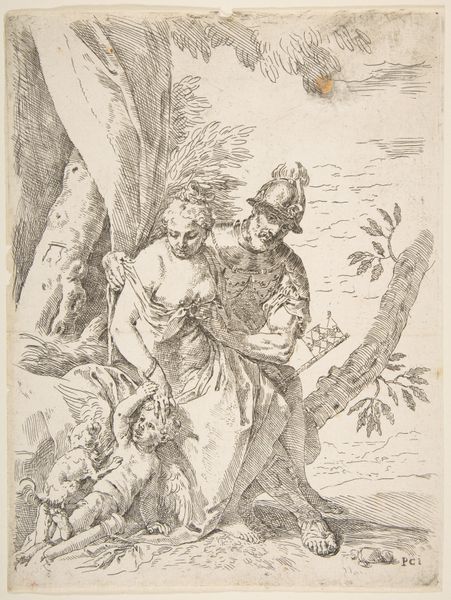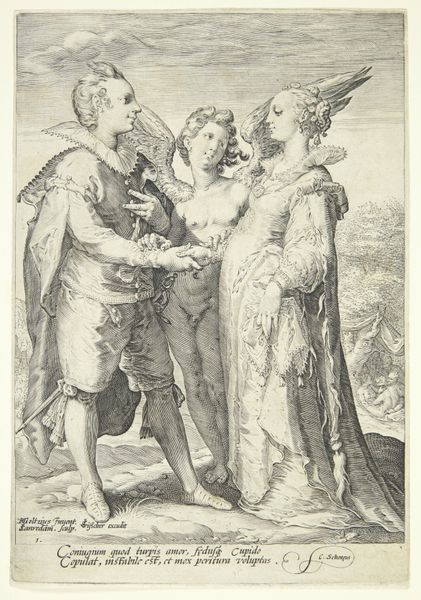
intaglio, engraving
#
pen illustration
#
intaglio
#
figuration
#
11_renaissance
#
line
#
history-painting
#
northern-renaissance
#
engraving
Dimensions: height 308 mm, width 219 mm
Copyright: Rijks Museum: Open Domain
Antonio da Trento made this print, "Vrouwelijke heilige ontvangt het Christuskind", sometime between 1520 and 1550, using the technique of etching. Look closely, and you'll see that the image is built from a dense network of fine lines. These were incised into a metal plate, likely iron or copper, using a sharp needle-like tool. The plate was then submerged in acid, which bit into the exposed lines, deepening them. After cleaning the plate, ink would have been applied, filling these grooves. Finally, paper was laid on top and run through a press, transferring the ink and image. The controlled labor of cutting lines into a plate, mirrored in the labor of running the printing press, resulted in artworks that could be replicated at scale. Prints like these were crucial to the development of early capitalism. The image becomes a commodity, available for trade and distribution. This had a democratizing effect on art, as it became more accessible to a wider audience than ever before. It also had the side effect of allowing artists to become celebrities! So, when you look at this image, consider not just the religious scene it depicts, but the whole matrix of making and marketing that made its circulation possible. This challenges the idea that "high art" exists in some separate sphere from more everyday forms of labor.
Comments
No comments
Be the first to comment and join the conversation on the ultimate creative platform.
